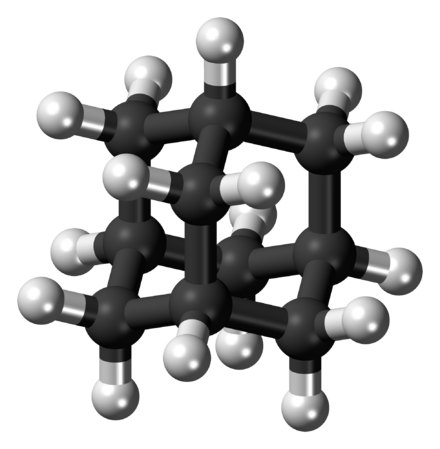John C. Baez's Blog, page 65
July 6, 2017
Entropy 2018
The editors of the journal Entropy are organizing this conference:
• Entropy 2018 — From Physics to Information Sciences and Geometry, 14–16 May 2018, Auditorium Enric Casassas, Faculty of Chemistry, University of Barcelona, Barcelona, Spain.
They write:
One of the most frequently used scientific words is the word “entropy”. The reason is that it is related to two main scientific domains: physics and information theory. Its origin goes back to the start of physics (thermodynamics), but since...
July 2, 2017
The Geometric McKay Correspondence (Part 2)
Last time I sketched how the  Dynkin diagram arises from the icosahedron. This time I’m fill in some details. I won’t fill in all the details, because I don’t know how! Working them out is the goal of this series, and I’d like to enlist your help.
Dynkin diagram arises from the icosahedron. This time I’m fill in some details. I won’t fill in all the details, because I don’t know how! Working them out is the goal of this series, and I’d like to enlist your help.
(In fact, I’m running this series of posts both here and at the n-Category Café. So far I’m getting more comments over there, so I suspect the serious helping will happen there. You may want to pop over there to see what people are talking about.)
R...
June 20, 2017
The Theory of Devices
I’m visiting the University of Genoa and talking to two category theorists: Marco Grandis and Giuseppe Rosolini. Grandis works on algebraic topology and higher categories, while Rosolini works on the categorical semantics of programming languages.
Yesterday, Marco Grandis showed me a fascinating paper by his thesis advisor:
• G. Darbo, Aspetti algebrico-categoriali della teoria dei dispotivi, Symposia Mathematica IV (1970), Istituto Nazionale di Alta Matematica, 303–336.
It’s closely connecte...
June 19, 2017
The Geometric McKay Correspondence (Part 1)
The ‘geometric McKay correspondence’, actually discovered by Patrick du Val in 1934, is a wonderful relation between the Platonic solids and the ADE Dynkin diagrams. In particular, it sets up a connection between two of my favorite things, the icosahedron:

and the  Dynkin diagram:
Dynkin diagram:

When I recently gave a talk on this topic, I realized I didn’t understand it as well as I’d like. Since then I’ve been making progress with the help of this book:
• Alexander Kirillov Jr., Quiver Representatio...
June 13, 2017
Information Processing in Chemical Networks (Part 2)
I’m in Luxembourg, and I’ll be blogging a bit about this conference:
• Dynamics, Thermodynamics and Information Processing in Chemical Networks, 13-16 June 2017, Complex Systems and Statistical Mechanics Group, University of Luxembourg. Organized by Massimiliano Esposito and Matteo Polettini.
I’ll do it in the comments!


June 8, 2017
The Mathematics of Open Reaction Networks

Next week, Blake Pollard and I will talk about our work on reaction networks. We’ll do this at Dynamics, Thermodynamics and Information Processing in Chemical Networks, a workshop at the University of Luxembourg organized by Massimiliano Esposito and Matteo Polettini. We’ll do it on Tuesday, 13 June 2017, from 11:00 to 13:00, in room BSC 3.03 of the Bâtiment des Sciences. If you’re around, please stop by and say hi!
Here are the slides for my talk:
May 16, 2017
The Dodecahedron, the Icosahedron and E8

Here you can see the slides of a talk I’m giving:
• The dodecahedron, the icosahedron and E8, Annual General Meeting of the Hong Kong Mathematical Society, Hong Kong University of Science and Technology.
It’ll take place on 10:50 am Saturday May 20th in Lecture Theatre G. You can see the program for the whole meeting here.
The slides are in the form of webpages, and you can see references and some other information tucked away at the bottom of each page.
In preparing this talk I learned...
May 5, 2017
Phosphorus Sulfides
I think of sulfur and phosphorus as clever chameleons of the periodic table: both come in many different forms, called allotropes. There’s white phosphorus, red phosphorus, violet phosphorus and black phosphorus:
and there are about two dozen allotropes of sulfur, with a phase diagram like this:
So I should have guessed that sulfur and phosphorus combine to make many different compounds. But I never thought about this until yesterday!
I’m a great fan of diamonds, not for their monetary...
May 1, 2017
Diamondoids

I have a new favorite molecule: adamantane. As you probably know, someone is said to be ‘adamant’ if they are unshakeable, immovable, inflexible, unwavering, uncompromising, resolute, resolved, determined, firm, rigid, or steadfast. But ‘adamant’ is also a legendary mineral, and the etymology is the same as that for ‘diamond’.
The molecule adamantane, shown above, features 10 carbon atoms arranged just like a small portion of a diamond crystal! It’s a bit easier to see this if you ignore the...
April 27, 2017
Biology as Information Dynamics (Part 2)
Here’s a video of the talk I gave at the Stanford Complexity Group:
You can see slides here:
• Biology as information dynamics.
Abstract. If biology is the study of self-replicating entities, and we want to understand the role of information, it makes sense to see how information theory is connected to the ‘replicator equation’ — a simple model of population dynamics for self-replicating entities. The relevant concept of information turns out to be the information of one probability distrib...
John C. Baez's Blog
- John C. Baez's profile
- 29 followers





